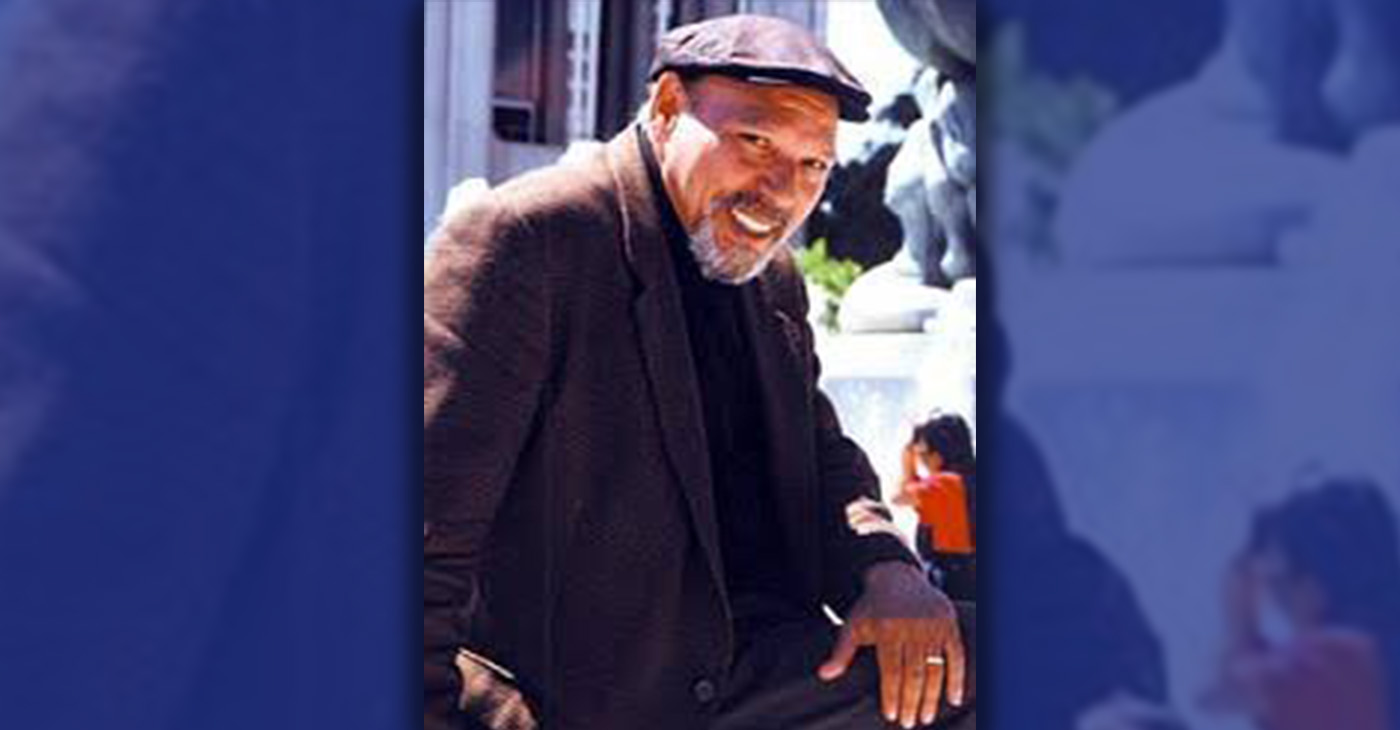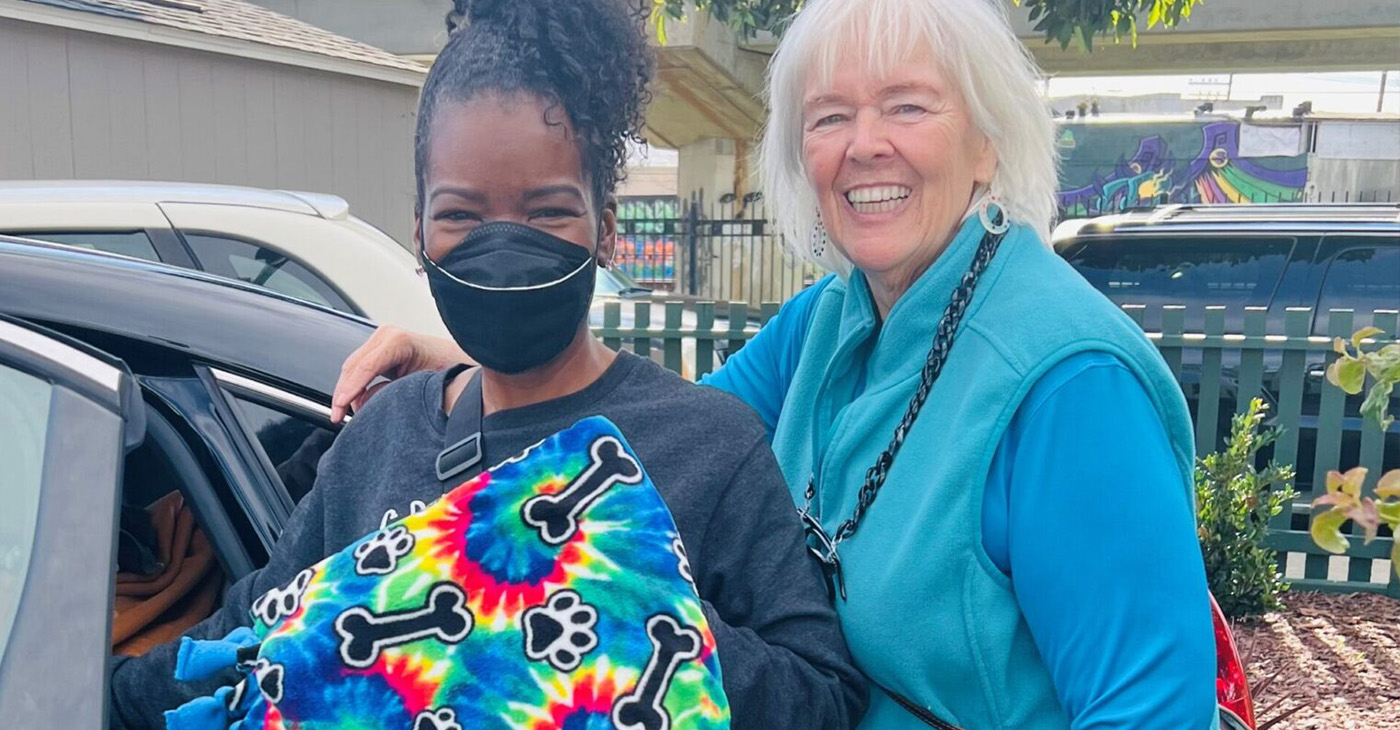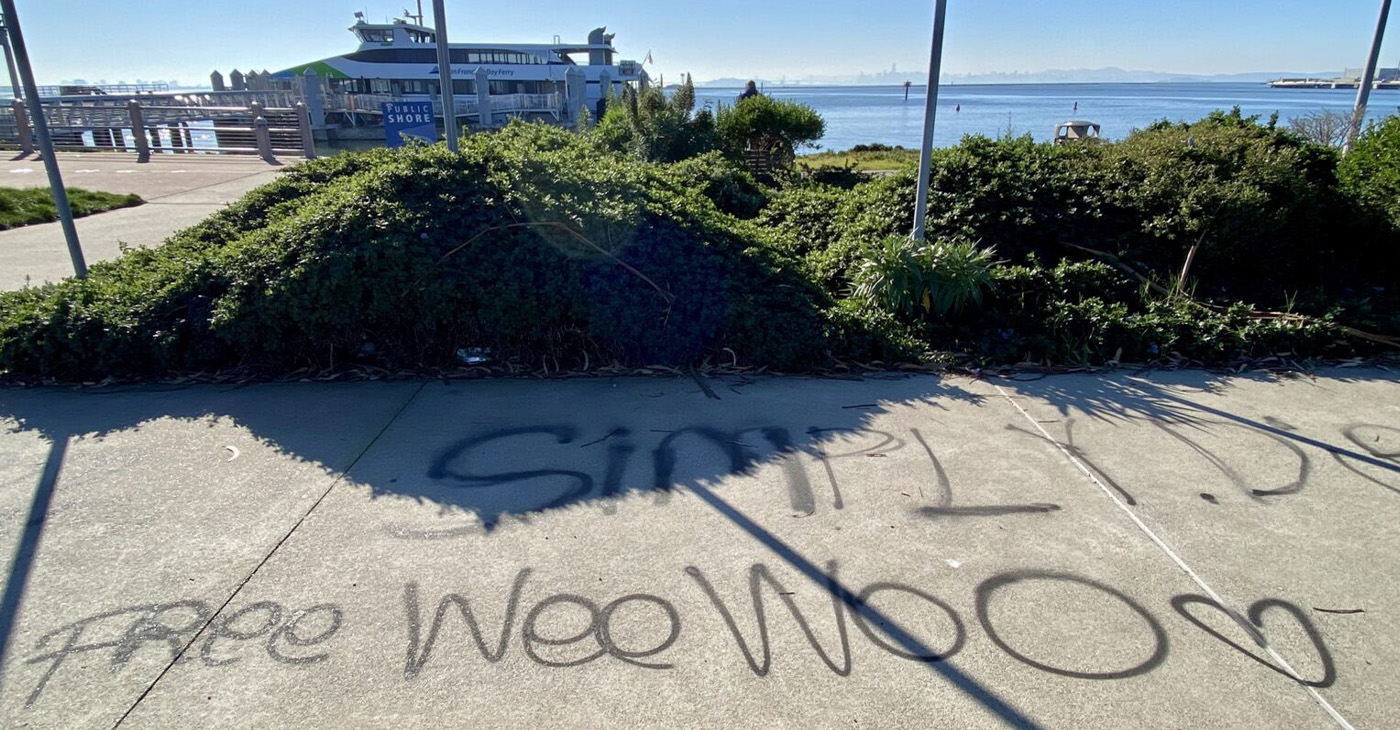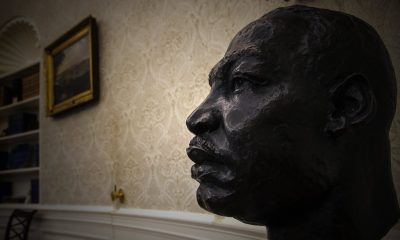Art
Mayor London Breed Announces Over $12 Million In Funding for Arts Organizations
Grants for the Arts funding priorities the City’s commitment to economic recovery and community activation by supporting local parades and festivals

Mayor London N. Breed and City Administrator Carmen Chu announced on Monday over $12 million in general operating support grants to fund arts and cultural organizations. This year’s Grants for the Arts (GFTA) funding is primarily dedicated to the general operating support for arts organizations and also aims to support community parades and festivals to help restore the City’s cultural vibrancy and drive its economic recovery.
“We know that the pandemic has been hard on all of us, but it has been especially difficult for our city’s artists and cultural organizations,” said Breed. “The arts are part of what makes San Francisco so special and create an inclusive atmosphere for all who live in and visit our city. During this critical time in our economic recovery, we need to do everything we can to bring back our community festivals that are loved by so many, and support those who contribute to our city’s vibrant culture.”
As president of the Board of Supervisors, Breed spearheaded Proposition E, which was passed by voters in 2018 and allocated 1.5% of hotel tax revenue to the arts. Due to the loss of hotel tax revenues brought on by the COVID-19 pandemic, Breed allocated funding from the General Fund to backfill losses during this year’s budget cycle. Breed’s budget for Fiscal Year 2021-2022 also includes $12 million for GFTA to support arts organizations, as well as parades and festivals.
“Cultural festivals and arts have always been an essential part of San Francisco’s vibrant community. They draw people to San Francisco, bring communities together, and in many ways, define our experiences here,” said City Administrator Carmen Chu. “Supporting our arts organizations during these challenging times is key to our City’s recovery.”
The City Administrator manages GFTA, a program that has provided a stable and dependable source for general operating costs to support the City’s arts and cultural organizations since 1961. Since its inception, GFTA has distributed over $400 million to hundreds of arts non-profits and cultural organizations. GFTA funds over 250 arts organizations each fiscal year, including those organizing and supporting parades and festivals throughout the City.
Committed to serving San Francisco’s diverse communities, this is the first year GFTA implemented a funding process that used a strong equity lens to focus on art organizations deeply rooted in and serving diverse populations.
“Having art and cultural events around every corner in the City is why people live here and it’s why people from all over the world visit San Francisco. Art and culture is the soul of San Francisco,” said Vallie Brown, director of Grants for the Arts. “As San Francisco slowly comes out of our long COVID nap, it’s vital that we support our arts organizations and our community’s parades and festivals.”
“Cultural live music and dance has been missing from our community throughout the pandemic,” says Roberto Hernandez, CEO of Carnaval San Francisco. “We appreciate Mayor Breed and Grants for the Arts for providing funding for all communities as we begin to recover and heal.”
In addition to parades and festivals, GFTA funds other essential arts activities, specifically those that capture and reflect the experiences of the City’s diverse communities, including BIPOC and LGBTQ communities and cross-cultural collaborations.
“We are blessed to live in one of the best cities in the world that cares about BIPOC stories, artists, and arts organizations by putting actionable effort into funding them,” says Rodney Earl Jackson Jr., artistic director of San Francisco Bay Area Theatre Company (SFBATCO). SFBATCO is a Black, Latin, Asian-led non-profit organization producing compelling theater that builds community, fosters cross-cultural dialogue, and promotes social justice.
A complete list of GFTA’s Fiscal Year 2022 grants can be found here.
Activism
Griot Theater Company Presents August Wilson’s Work at Annual Oratorical Featuring Black Authors
The performance explores the legacy of Pulitzer Prize-winning playwright August Wilson whose 10-play Century Cycle chronicles the African American experience across the 20th century, with each play set in a different decade. “Half a Century” journeys through the final five plays of this monumental cycle, bringing Wilson’s richly woven stories to life in a way that celebrates history, resilience, and the human spirit.

By Godfrey Lee
Griot Theater Company will present their Fifth Annual Oratorical with August Wilson’s “Half a Century,” at the Belrose on 1415 Fifth Ave., in San Rafael near the San Rafael Public Library.
The performance explores the legacy of Pulitzer Prize-winning playwright August Wilson whose 10-play Century Cycle chronicles the African American experience across the 20th century, with each play set in a different decade. “Half a Century” journeys through the final five plays of this monumental cycle, bringing Wilson’s richly woven stories to life in a way that celebrates history, resilience, and the human spirit.
Previous performance highlighting essential Black American authors included Maya Angelou, James Baldwin, and Lorraine Hansberry with Langston Hughes.
The play will be performed at 3:00. p.m. on Feb. 20, 21, 22, 27, and 28 at 7:00 p.m., and on Feb. 23 at 3:00 p.m.
For more information, go to griottheatercompany.squarespace.com/productions-v2
Activism
MLK Day of Service Volunteers Make Blankets and Art for Locals in Need
“Everyone has an opportunity to participate,” said Glenda Roberts, kinship support care program manager at CCYSB. “Our nonprofit organization and participants recognize how important it is to give back to the community and this is serving. As Dr. Martin Luther King, Jr. stated, ‘Everybody can be great…because anybody can serve.’”

By Kathy Chouteau
The Richmond Standard
The Contra Costa Youth Service Bureau (CCYSB) and Bethlehem Missionary Baptist Church (BMBC) are collaborating with a team of volunteers for a Dr. Martin Luther King, Jr. Day of Service, Monday, Jan. 20 that will wrap the community’s most vulnerable people in warm blankets and provide them with an uplifting gift of art.
Volunteers will kick off their activities at BMBC at 11 a.m., making blankets for the unhoused people served by the Greater Richmond Interfaith Program (GRIP) and art for those in convalescence in Richmond.
Others will get to work preparing a lunch of chili, salad, a veggie tray, and water for participants, offered courtesy of CCYSB, while supplies last.
“Everyone has an opportunity to participate,” said Glenda Roberts, kinship support care program manager at CCYSB. “Our nonprofit organization and participants recognize how important it is to give back to the community and this is serving. As Dr. Martin Luther King, Jr. stated, ‘Everybody can be great…because anybody can serve.’”
“People of all ages are welcome to participate in the MLK Day of Service,” said Roberts. Volunteers can RSVP via phone to Glenda Roberts at 510-215-4670, ext. 125.
CCYSB Boardmember Jackie Marston and her friends donated the materials and supplies to make the blankets and art projects. The nonprofit is also providing the day’s complimentary lunch, as well as employees to volunteer, under the direction of CCYSB Executive Director Marena Brown.
BMBC, led by Rev. Dr. Carole McKindley-Alvarez, is providing the facility for the event and volunteers from the church, which is located at 684 Juliga Woods St. in Richmond.
Located in Richmond, CCYSB is a nonprofit youth advocacy organization that serves eligible children, youth, and low-income families with a variety of wraparound services so they can thrive. Programs include academic achievement, youth mentorship, truancy prevention and direct response.
Art
Vandalism at Richmond Ferry Terminal Saddens Residents
Residents have been lamenting the destruction online. Ellen Seskin posted photos of the vandalism to the Facebook group, Everybody’s Richmond, on Jan. 12, saying she encountered it while out on a walk. “It was on the sidewalk, the street, the doors to the ferry, even in the art installation and the ‘stone’ benches,” she said. “I reported it but knowing how slow they are about getting things done — I just know that the longer you leave graffiti, the more likely they are to spray it again.”

The Richmond Standard
“This is why we can’t have nice things,” stated the post on NextDoor.
The post referenced images of graffiti at the Richmond Ferry Terminal. Not just on the terminal, but also on public artwork, on trail signs, on public benches and the boardwalk.
On Wednesday, the Standard stopped by to see it for ourselves. The good news was that it appears the graffiti on the terminal and on the artwork, called Changing Tide, have been cleaned for the most part. But graffiti remained abundant in the area around the relatively new ferry terminal, which opened to the public just six years ago.
Graffiti artists tagged benches and the boardwalk. Cars that had done doughnuts in the street marked the cul-de-sac just outside the historic Craneway Pavilion.
A ferry worker told us the graffiti had been there since before he started working for the ferry service about a week ago.
A member of the Army Corps of Engineers who did not want to be named in this report called the scene “sad,” as “they’d done such a nice job fixing it up.”
“It’s sad that all this money has been spent and hoodlums just don’t care and are destroying stuff,” he said.
It wasn’t immediately clear how soon the graffiti would be removed. The Standard reported the graffiti to the city’s graffiti abatement hotline. We were prompted to leave a message reporting the address and location of the graffiti.
Residents have been lamenting the destruction online. Ellen Seskin posted photos of the vandalism to the Facebook group, Everybody’s Richmond, on Jan. 12, saying she encountered it while out on a walk.
“It was on the sidewalk, the street, the doors to the ferry, even in the art installation and the ‘stone’ benches,” she said. “I reported it but knowing how slow they are about getting things done — I just know that the longer you leave graffiti, the more likely they are to spray it again.”
In the comment section responding to Seskin’s post, local attorney Daniel Butt questioned why there aren’t cameras in the area.
On Nextdoor, one resident suggested searching to see if the tags match any accounts on Instagram, hoping to identify the perpetrator.
On its website, the City of Richmond says residents should graffiti immediately call Public Works graffiti removal and/or Code Enforcement at 510-965-4905.
Kathy Chouteau contributed to this report.
-

 #NNPA BlackPress3 weeks ago
#NNPA BlackPress3 weeks agoMLK Bust Quietly Removed from Oval Office Under Trump
-

 Activism3 weeks ago
Activism3 weeks agoOakland Post: Week of May 7 – 13, 2025
-

 Activism3 weeks ago
Activism3 weeks agoOakland Post: Week of April 30 – May 6, 2025
-

 #NNPA BlackPress3 weeks ago
#NNPA BlackPress3 weeks agoTrump Abruptly Fires First Carla Hayden: The First Black Woman to Serve as Librarian of Congress
-

 Activism1 week ago
Activism1 week agoNew Oakland Moving Forward
-

 Activism1 week ago
Activism1 week agoAfter Two Decades, Oakland Unified Will Finally Regain Local Control
-

 #NNPA BlackPress3 weeks ago
#NNPA BlackPress3 weeks agoBlack America Celebrates African Descent Heritage of Pope Leo XIV
-

 Alameda County1 week ago
Alameda County1 week agoOakland Begins Month-Long Closure on Largest Homeless Encampment


















































